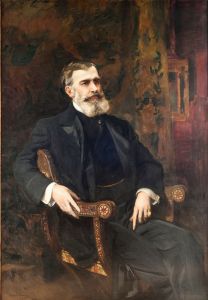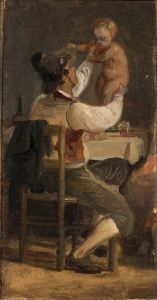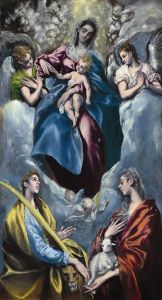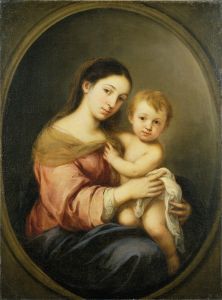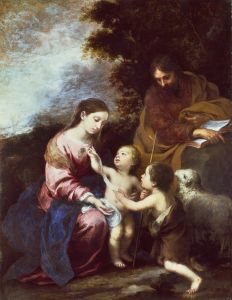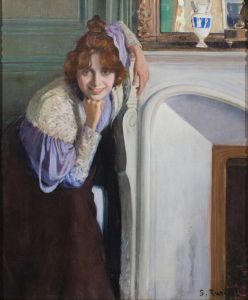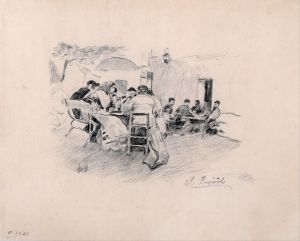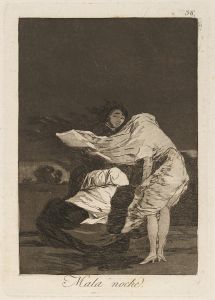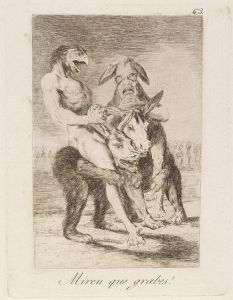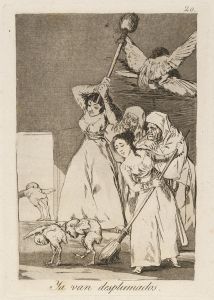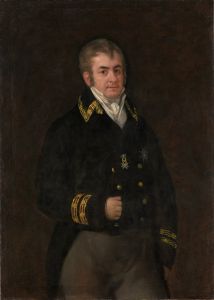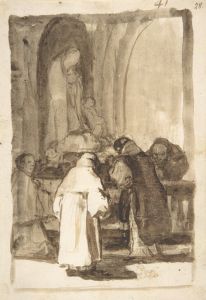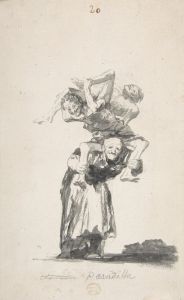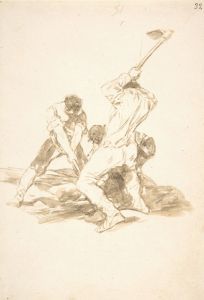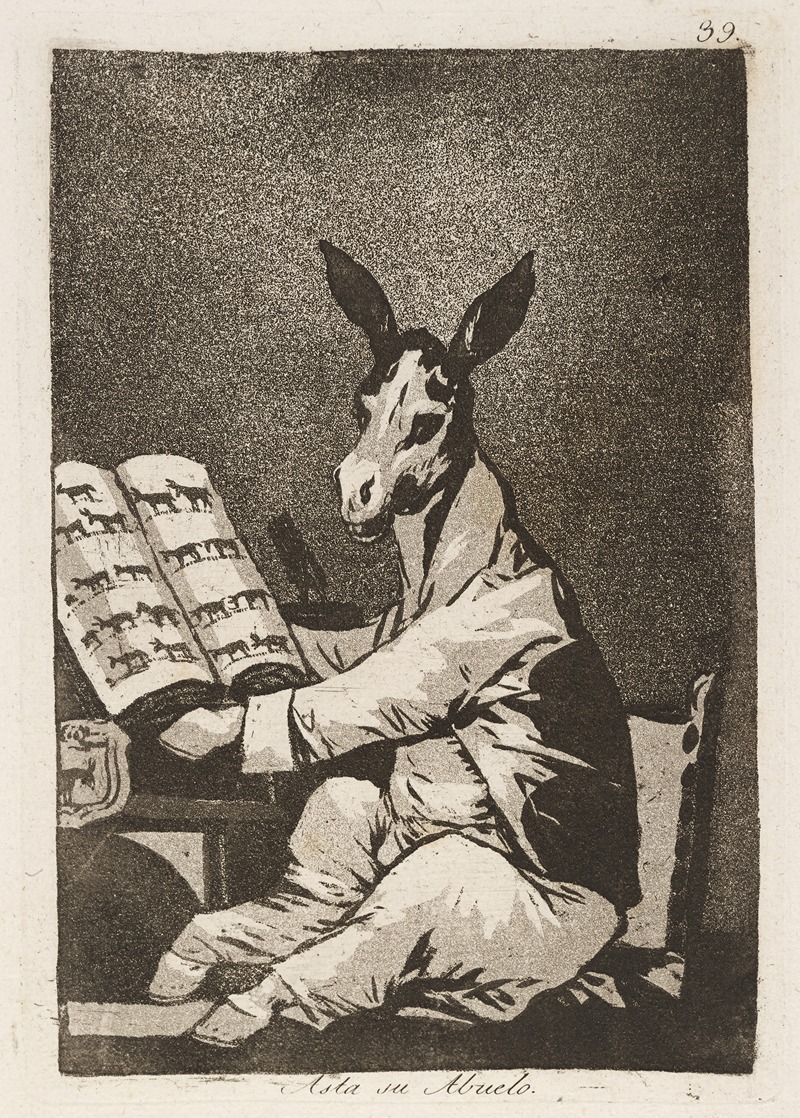
Asta su Abuelo.
A hand-painted replica of Francisco de Goya’s masterpiece Asta su Abuelo., meticulously crafted by professional artists to capture the true essence of the original. Each piece is created with museum-quality canvas and rare mineral pigments, carefully painted by experienced artists with delicate brushstrokes and rich, layered colors to perfectly recreate the texture of the original artwork. Unlike machine-printed reproductions, this hand-painted version brings the painting to life, infused with the artist’s emotions and skill in every stroke. Whether for personal collection or home decoration, it instantly elevates the artistic atmosphere of any space.
Francisco de Goya's "Asta su Abuelo" is a lesser-known work by the renowned Spanish painter and printmaker. Goya, who lived from 1746 to 1828, is celebrated for his profound impact on the art world, particularly through his paintings, drawings, and etchings that often reflect the social and political upheavals of his time. However, "Asta su Abuelo" is not one of his widely recognized pieces, and there is limited information available about this specific work.
Goya's oeuvre is characterized by its diversity, ranging from commissioned portraits of the Spanish aristocracy to more personal and politically charged works that critique the society and events of his era. His art often delves into themes of human folly, the brutality of war, and the darker aspects of human nature, as seen in his famous series "Los Caprichos" and "The Disasters of War."
The title "Asta su Abuelo" can be translated to "Up to His Grandfather" in English. This phrase might suggest a commentary on lineage or heritage, a theme that Goya explored in various ways throughout his career. However, without more specific information about the painting itself, such as its visual content, context, or the circumstances of its creation, it is challenging to provide a detailed analysis or interpretation.
Goya's work is often noted for its innovative use of imagery and technique, which paved the way for modern art movements. His ability to capture the psychological depth of his subjects and his willingness to confront uncomfortable truths about society have made his work enduringly relevant. Despite the lack of detailed information about "Asta su Abuelo," it is reasonable to assume that it might share some of these qualities, given Goya's consistent thematic interests and artistic style.
Throughout his career, Goya experienced significant personal and professional transformations, influenced by the political turmoil of Spain, his own health challenges, and his evolving philosophical outlook. These experiences are reflected in the progression of his artistic style, from the bright and detailed portraits of his early career to the darker, more introspective works of his later years.
In summary, while specific details about "Asta su Abuelo" are scarce, understanding Goya's broader body of work provides some context for appreciating the themes and techniques he might have employed in this piece. Goya remains a pivotal figure in art history, and each of his works contributes to the rich tapestry of his artistic legacy.





